At the Schermerhorn
NSO’s One Program in Three Mediums – Opera, Orchestra, and Ballet
The Nashville Symphony and Maestro Giancarlo Guerrero took audiences to the opera house, the concert hall, and even the ballet with the program presented October 17-19. Featuring the artistry of violin soloist Gil Shaham, this program was situated between a performance the previous weekend of Antonio Vivaldi’s The Four Seasons for Violin and Orchestra, Op. 8, nos. 1-4 and Gloria, R. 589, and a special event accompanying the Tower of Power this upcoming week. Such variety of programming and regular performances are two of the many strengths that have come to be expected of this organization.
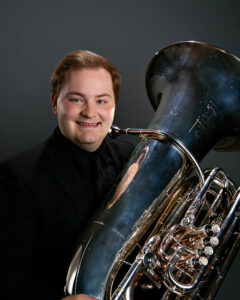
Composed in 1869, the Overture to La forze del destino has cemented itself as a favorite from the pit of opera houses and on stage in concert halls alike. The libretto depicts the consequences of an ill-fated love story, or, in other words, a typical Nineteenth Century opera. A respectfully full house welcomed both Concertmaster Peter Otto and Music Director Guerrero to the stage, after which the opening chords from Giuseppe Verdi’s score quickly sounded.
Perhaps more caffeinated than some interpretations, Guerrero propelled the three opening chords from an impeccably balanced brass and bassoon sections twice, not allowing the first iteration to completely dissipate throughout Laura Turner Concert Hall before inviting the music to continue. Chandler Currier, the new principal tubist and a Middle Tennessee native, is to be credited for playing a cimbasso for this opening piece. With a forward-facing bell and predominantly cylindrical bore, the cimbasso creates a bass sound that can blend with the trombone section even better than can the tuba. Historically, this instrument was commonly used to perform late Romantic Italian opera, so much so that it has even been referred to as the ‘trombone basso Verdi.’
Equally impressive to the robust opening presented by the brass and bassoon sections was the Nashville Symphony’s dynamic range made available throughout Verdi’s score, particularly the softer end of the spectrum. In a society where loud and bold tends to occupy headline real estate, the Nashville Symphony’s willingness to take advantage of opportunities to offer such nuance should be both acknowledged and encouraged.
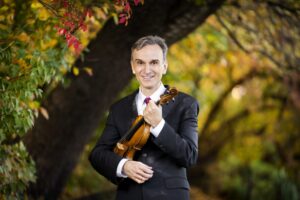
Having just performed Ludwig van Beethoven’s Violin Concerto in D Major, Op. 61 last season, violin soloist Gil Shaham is becoming a perennial highlight for Nashville Symphony audiences. After an extended tuning session backstage, Shaham accepted applause with a humbled grace that seemed to have won him the favor of both members of the Nashville Symphony and its audience – all realities that occurred last season, too. This program featured Mason Bates’ Nomad Concerto, with the added feature of a live recording project expected to be commercially released upon completion.
Along with the Philadelphia Orchestra and San Diego Symphony, the Nashville Symphony is a consortium partner that helped initiate the creation of this work. Receiving its premiere performance with Yannick Nézet-Séguin conducting the Philadelphia Orchestra in January 2024, this piece is the second violin concerto composed by Mason Bates, who offers the following program note:
Nomad Concerto explores the mysterious and soulful music of the wanderer.
Envisioned to showcase the legendary Old World sound of Gil Shaham, the concerto is informed by a diverse range of traveling cultures from Eastern Europe to the Middle East. In the same way that nomadic musics have continually reimagined themselves, the many styles informing the concerto are swirled together into a unique soundworld.
The concerto’s opening movement imagines an old balloon seller wandering through a village as he sings a doleful tune, which is gradually picked up by the villagers. The music draws from a variety of elements of the European Roma, with the soloist sometimes using a strumming pizzicato effect suggestive of mandolin. The movement is followed by the short, scherzo-like ‘magician at the bazaar’ showcasing quicksilver violin figuration that the orchestra transforms into shimmering and gossamer textures.
Over haunting orchestral expanses depicting the vast deserts of the Middle East, the Jewish folk tune “Ani Ma’amin” unfolds in “Desert vision: oasis.” The movement’s heaviness temporarily brightens at the vision of a sparkling oasis. A propulsive finale is animated by the ‘minor swing’ of 1930s jazz clubs, as epitomized by the legendary Django Reinhardt of the ‘manouche’ clan.
Bates has completed residencies with leading orchestral institutions throughout the United State of America – the San Francisco Symphony, National Symphony, and the Chicago Symphony, among others – as well as spinning numerous sets as a dj. All of these influences have been filtered through the composer’s perspective to create a work that, at times, presents quite cinematically, on occasion offers a hip and urban vibe, while still at other times depicts a pastoral expansiveness that calms. Shaham is called to use various string techniques, including a glassy ponticello bowing, as well as bowing while simultaneously using pizzicato with his non-bow hand. Bates’ Nomad Concerto is an intriguing composition that was executed convincingly by both soloist and orchestra. Mason Bates was welcomed to the stage to receive multiple rounds of well-earned applause, before joining the audience to experience the second half of the concert.
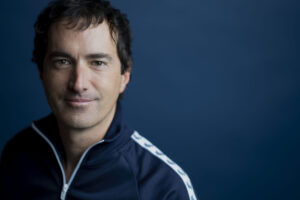
After intermission, Igor Stravinsky’s original 1909-1910 full ballet score for The Firebird completed the program. Lasting about fifty minutes, it is more common for the twenty-two minute Suite from The Firebird to be programmed instead. Offering the entire score affords one the opportunity to hear gestures evolve and the drama they depict to develop and subside. However, without the dance component, sections of the music felt stagnate and unnecessary for the concert hall alone. Furthermore, if dancers were involved, Maestro Guerrero forced tempi that, on occasion, felt frantic and presumably an unfit challenge for choreography.
Regardless, this assumed ‘pet project’ was well received and impeccably performed. Despite many key players of the ensemble executing solo passages with such spirit, or soul as the situation aligned, members of the Nashville Symphony stood together without any individual bows initiated from the podium. Special congratulations should have gone to the woodwind block of the orchestra who brilliantly gave flight to the Firebird, and to principal bassoonist, Julia Harguindey, who offered a “Lullaby” that mesmerized.
Nashville Symphony President and CEO, Alan D. Valentine, needs credit for establishing a culture that welcomes patrons in suits and jeans all the same. Art is often a reflection or a reaction to the context in which it was created. Even without serious study of the medium, music’s power is universal, being felt by academics and amateurs. Nashvillians are urged to open themselves to experience live classical music by an ensemble that has removed many of the barriers once thought to pretentiously protect this magic. Giancarlo Guerrero has built your Nashville Symphony with an artistic prowess that doesn’t need an oceanic coast to prove worthy of receiving accolade or your attention. If you are not patroning the Schermerhorn Symphony Center you are missing out!
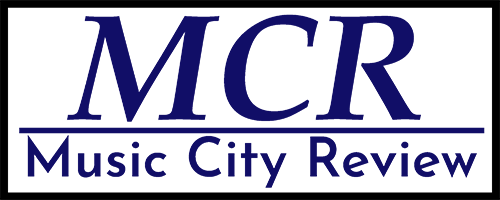

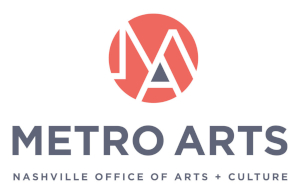
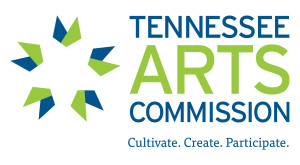
Great to see your accomplishments Dennis! Went to see the Youngstown Honors Band with my daughter recently which brought back great memories of YSYO. I wish you all the best!